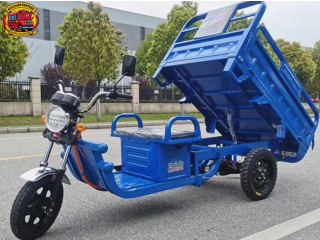What is a rod seal? Professional
4 years ago - Automobiles - Beaverton - 267 viewsThere are so many different types of seals out there that it might be hard to understand all the different terminologies and functions. In this article, we give you our guide to what rod seals are, how they are manufactured and why you should choose rod seals from Martin’s Rubber.
Rod seals are often the decisive factor in ensuring that a hydraulic cylinder operates at peak performance. Leakage through the rod seal can lead to environmental damage and accidents, which is why it’s crucially important to select the correct seal for your application. While leakage past a piston seal will affect its efficiency, the system fluid or gas remains contained in the system. With a rod seal, failure will allow external leakage, and it should be paired with an appropriate wiper and gland housing design to ensure correct operation.
How do rod seals work?
Rod seals perform the difficult balancing act of creating a seal at both high and low pressure. This is often in combination with alternating high and low temperatures. As such, they need to leave an oil film, thin enough to return into the cylinder, after having passed an effective wiper seal. When selecting a piston rod seals, it is important to define your area of application and provide carefully defined specifications. Martin’s Rubber can then give you our recommendations for an appropriate rod seal to match your specific operating conditions.
How are rod seals manufactured?
Our rod seals can be CNC machined to bespoke sizes, including making adjustments away from original seal sizes to compensate for worn rod or gland conditions. Plus, we can help to restore the original performance of used equipment, as well as provide components for new build designs. Our standard rod seals can be rapidly manufactured in a variety of different materials, depending on your application. We also stock standard products for immediate shipment if your requirements are particularly time critical.
Why choose our rod seals?
“What sets us apart, I think, is that we’re flexible,” says Adam Hooper, Operations Director at Martin’s Rubber. “We deliver the quality that people need in the most responsive way possible, and we add value in terms of engineering and creative input,” he adds. Contact one of our expert advisers today on 023 8022 6330 or email [email protected] to discuss your rod seal requirements.
Designers often specify buffer seals be placed in front of primary rod seals in heavy-duty hydraulic applications to extend the life of the seals. As the name indicates, buffer seals “absorb” pressure spikes typical on heavy-duty cylinders to protect the primary rod seals.
But how do these two types of seals interactions interact, which parameters affect those interactions, and how can they be used to extend the life of cylinder rod-sealing systems?
What was learned during these investigations will give engineers insights into seal types and interactions between seals so they can specify the most appropriate seals for their applications.
The key element of the buffer seal is the lubrication film thickness which passes the sealing edge. It is responsible for the performance of the entire rod sealing system. Different pressure and speed conditions during the in- and outstroke of the piston rod are typical for heavy-duty hydraulic cylinders and result in different oil film thickness. Therefore, the buffer seal needs to be designed to ensure a hydraulic cylinder rod step seals and absorb pressure peaks during operation.
















